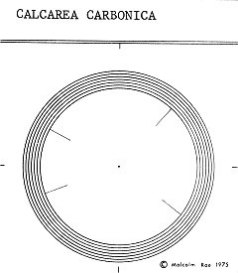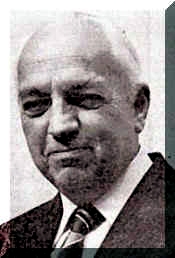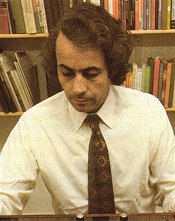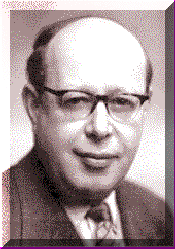MGA-RAE INFORMATION
MALCOLM RAE AND MAGNETO-GEOMETRY
Magneto Geometry was developed by Malcolm Rae, one of a group of pioneering Doctors, Homoeopaths and Radionic researchers working in Britain from the 1940s through to the 1980s. This group included Dr. George Laurence, founder of the Psionic Medical Association; George de la Warr; Dr Aubrey Westlake; Dr Guyon Richards; John Da Monte; David Tansley, and others.
Rae himself had a distinguished career in the Royal Navy, where he rose to the rank of Commander during World War II. While in the Navy he was introduced to Radionics by a Captain Atkinson. Although he rejected Radionics at the time, he later became interested in it during the 1950s and carried on to develop remarkable new techniques and instruments. Some of this work is described in detail in the book DIMENSIONS OF RADIONICS by Tansley, Rae and Westlake (ISBN 0-914732-29-3).
|
Malcom Rae |
David Tansley |
John Da Monte |
At first Rae worked with ‘conventional’ Radionic instruments, derived from the work of Abrams and Drown. These instruments coded the vibrational quality of a selected substance in terms of a chain of numbers – Diamond, for example, is 442337. Rae discovered that distinct pendulum reactions are obtained at certain angular relations to the earth’s magnetic field. These may be marked within the circle (see below) as radial lines. The resolution of each line is to one degree of arc. The result is a system of cards, two of which are illustrated below. There are currently more than 25,000 cards in the MGA system.
 |

|
These cards are used in various instruments designed by Rae, and may also be used in the contemporary range of instruments designed by Nick Franks and shown on this website. Rae’s ANALYSER is used to build up a picture of the quality of the patient’s energy field and to discover any disturbances to it. The basic method is Location (e.g. Respiratory system) – Factor (e.g. Infection) – and Correction (e.g. Homeopathic remedy).
The SIMULATOR may be used to either prepare oral remedies or to give Radionic distant treatment using the appropriate cards. The photograph below shows a 4-card instrument.

MAGNETO-GEOMETRIC INSTRUMENTS, email: magneto@talk21.com
From a talk by the late Margaret Belsham, who worked with Malcolm Rae for many years From 1958 until his death in 1979
Malcolm devoted most of his time in an endeavour to find a better understanding of what was then referred to as “Unorthodox medicine” but which is now called Alternative or Complementary medicine.
In 1959, with the aid of a Homoeopath and Homoeopathic remedies Malcolm had successfully eliminated a kidney stone and, two years later, gallstones. The observation that above a certain potency a succussion/dilution prepared Homoeopathic remedy contained no measurable substance intrigued Malcolm and because of this he started to investigate the energy fields involved. An article, written by Malcolm called “Homoeopathy up to Date” explains some of his research work and findings which took place during the early 1960’s. This can be obtained from Magneto-Geometric Applications.
The earliest simulator used only the Earth’s magnetic field as a source of energy and the remedies prepared were of very poor quality. However, we believed the results justified the continuation of our researches and the combination of radiesthesic investigation and experimentation lead to the use of Magneto-Geometry, which is the energisation of geometric patterns by a facet of Magnetism. In 1966 a few experimental instruments were made and to overcome any shortcomings, experiments were undertaken to discover whether or not the effect caused by the energised pattern could be guided along a wire from the centre of the drawing to the base of a cylindrical container, into which a phial could be placed. These experiments proved entirely satisfactory, with the result that the pattern could be removed from the effects of the earth’s magnetic field. Further experiments showed that the earth’s field could be replaced by that of a small magnet and hence it was possible to contain a potency simulator in a case. This instrument – which was called the Mark 1 – was tested by a number of practitioners, before being superceded in 1970 by the Mark 11.
The principle used was :-
‘The unique characteristic of any substance may be expressed numerically, or geometrically as a two-dimensional figure.
The Mark II Potency Simulator, using the relevant geometrical figure, makes the equivalent of a homoeopathic potency by superimposing the characteristic of the required remedy on blank pills or distilled water.’
The Mark II model was modified and improved and the Mark III Potency Simulator became available. Changes in design of the Mark 111 Potency Simulator were made by equipping them with more powerful circular magnets and this model has remained unchanged since then.
A Simulator uses a card bearing a geometrical pattern representing the remedy to be simulated. A card consists of a series of concentric circles containing a number of partial radii of equal length. The card is surrounded by a magnetic field, one component of which is believed to be a standing wave. That is, a wave that does not actually travel, but which has a back and forth motion, which subjects any point in it to rhythmic variations in pressure. A fuller explanation can be found in the pamphlet “Homoeopathy up to Date”.
During the next 2 years other instruments were produced, based on the researches and experiments carried out during the 1960’s. Details of these instruments can be obtained from Magneto Geometric Applications.
One of the instruments – called a Potency Preparer – prepares remedies by the application of magnetism to a sample of the substance from which a potency is required.
Since these instruments and simulator cards became available they have been supplied world-wide to Homoeopaths and to other therapists who practise all forms of healing including gem therapy, colour therapy, organotherapy, acupuncture etc.
Soon after he began to carry out his researches into “Energy Patterns” relative to Homoeopathic remedies, Radionics came into Malcolm’s field of interest and research. One day, he told me of a meeting he had with Captain Atkinson whilst serving in the Fleet Air Arm during the Second World War. The Captain was endeavouring to explain a method of healing called “Radionics”. After some time, Malcolm said “well sir, I have always regarded you as a worthy and sensible person but what you have just told me appears to be absolute rubbish.”
In 1959 Malcolm heard the name Radionics mentioned again and he remembered the conversation with Captain Atkinson. We endeavoured to find the whereabouts of Captain Atkinson but the only information we could obtain was that somebody thought he and his wife had moved to Exeter. Soon after, we experienced a so-called coincidence: Malcolm was looking at a second-hand book he had recently purchased and inside the cover was a label with Captain Atkinson’s name and address. We wrote to him and a meeting was arranged. During the meeting the Captain was able to pass on his enthusiasm regarding Radionics and to give the names and addresses of people who were involved with this method of healing. Malcolm’s attitude to this was very different from his first introduction to the subject.
During the early 1960’s we visited several people who manufactured Radionic instruments and we were also introduced to Elizabeth Baerlein and Lavender Dower, who proved to be wonderfully supportive and encouraging from the moment we met them. We also became Associate Members of The Radionic Association. At this time, Malcolm was becoming more and more interested in becoming a Radionic Practitioner and we purchased several Radionic Instruments and “practised” on family, friends and household pets.
However, Malcolm wanted to obtain a better understanding of Radionic instruments and thereafter to construct instruments more closely suited to his specific needs than those available.
One of the most important skills of a Radionic Practitioner is dowsing with a pendulum. The definition of Radionics could be described as healing at a distance – using an instrument – practised by someone using the Radiesthesic sense.
I would like to mention a booklet entitled “The Radiesthesic or Dowsing Faculty” which comprises two lectures, one given by Dr. Aubrey Westlake entitled “The Role and Scope of the Radiesthesic Faculty in the Modern World”, and the other given by Malcolm Rae entitled “The Scope and Limitations of Radiesthesic Investigation”. Malcolm’s personal experience of living nearly fifty years before acknowledging and accepting the existence of the Radiesthesic sense and then being able to develop it to a point where in its own context he considered it as trustworthy as a good pair of eyes convinced him that the Radiesthesic sense could be developed. He believed that for some people it required certain disciplines and a great deal of practise.
I quote from an article Malcolm wrote which he called “TRAINING THE RADIESTHESIC SENSE”:
‘One of the most alarming features of Radiesthesia is the number of people who, finding some sort of response from a pendulum, believe themselves competent to use one, completely and accurately, whilst possessing nothing approaching the skill and reliability required for responsible use. There is something in common between learning to use the pendulum and learning to play the piano, in that skill comes only from an adequate amount of practise in doing each well.
‘No-one believes that the ability to press a few notes on the keyboard of a piano and thus to produce a few simple notes sometimes recognisably similar to those in a known piece of music indicates an ability to play complicated music in a faultless manner. No-one should entertain a similar misbelief about a pendulum – for in both cases practice is necessary. Possibly the main difference is that the inaccurate pianist can do much less harm than the inaccurate Radiesthetist for errors of the former are much more obvious.’
I am going to quote from some papers written by Malcolm in 1966:
RESULTS OF RESEARCH INTO THE CONSTRUCTION OF DIAL-SETTING RADIONIC INSTRUMENTS:-
(a) Tuning components are monitors of proportion, which may be linear, curved or forming enclosed shapes
(b) If electronic components are used for this purpose, their electronic characteristics have no significance in Radionic “circuitry”
(c) Different samples of the same electronic specification of component may possess opposite radiesthetically detectable “polarities” and it is desirable for polarities to be wired in series
(d) In order to eliminate the effects of the lengths of connecting wires, double wiring should be used throughout the rate-setting part of the circuit
The rates which had been used in the past were based upon the 0-10 scale and those developed by Malcolm were based on a 0-44 scale. They were designed to be more accurate than those using the denominator 10, affording an enormously extended range of settings. The Base 44 instrument was, in fact, designed to align with the response to a Radiesthesic question “What is the minimum number of calibrations required on the dials of an instrument in order that it may express, without interpolation, every concept included in the human entity?”
In one of his papers Malcolm wrote “There is an accumulation of evidence from a number of Radionic practitioners that the Base 44 instrument is considerably more effective and certain in its results than any 10 based instrument with which it has been compared.”
However, Malcolm was not satisfied with dial-setting instruments because he found them irksome and prone to practitioner error in the setting-up of rates. We then began to investigate the possibility of using Simulators and Preparers for Radionic treatment.
We asked several friends and colleagues to join us in our researches and happily they agreed.
We decided to place a hair sample in the well of a simulator with the appropriate remedy card in the slot and leave for one week.
However, it was soon obvious that the improvement in the wellbeing and health of our colleagues was very poor indeed. We carried out Radiesthesic Question and Answer sessions and came to these conclusions:-
‘The Magneto-Geometric pattern from a simulator card is received by the water molecules in distilled water or blank pills as soon as they are placed in the Simulator’s well, but in its connection to a remote patient it has to be pulsated in order to reach the patient. Like direct current electricity, the steady potential cannot pass through the distance between instrument and patient except insofar as there is a single impulse when the treatment starts. Whereas, like the pulsations of alternating current electricity passing through a capacitor, each impulse will pass through this distance. To the best of present knowledge the “Radionic impulse” reaches the patient’s physical body via his biomagnetic field, which appears to be able to receive it, and pass it on to the physical body, but not simultaneously, and for this reason the Interrupter is required. The Interrupter is an electronic switch which makes and breaks the circuit between the source of the Magneto-Geometric Energy in the Simulator and its output in the well (in which the patient’s hair sample is placed).’
Therefore, when using any Magneto-Geometric Simulators or Preparers for Radionic Treatment, an Interrupter must be connected. At a later date it was interesting to learn from David Tansley that some of Abram’s treatment instruments used a “Pulsator” – which must have served the same purpose as the Interrupter.
I would now like to tell you something about the Analyser. In 1965 one of Malcolm’s projects was research into the development of teaching methods and to design a diagnostic instrument together with a satisfactory form for recording results of diagnosis.
There were several prototypes based upon research and application and eventually the Rae Analyser was designed. This comprised the Analyser, a Chart Board holder which had to be connected to the Analyser Box, an Analysis Chart and a Treatment Chart. It employed the principle of Magneto-Geometry, the data being fed into the instrument in the form of Simulator cards.
When carrying out a Radionic Analysis, using a pendulum, one is endeavouring to subdue the intellect and to enhance the intuition. We had found that a piece of magnetised rubber sheet placed underneath an Analysis and Treatment chart did help with this. Based on this observation the chart board holder contains a sheet of magnetised rubber.
The Analyser is used by many Radionic practitioners and by other therapists who are skilled dowsers.
In 1970 we had been running our Radionic practise for 3 years and we had experienced enough success to make us believe that Radionic treatment could help some people but we had enough failure to prevent us becoming complacent.
We decided to carry out some Radiesthesic investigations with a view to improving Radionic treatment.
For our researches we assumed that immediately after a patient had received the correct Radionic treatment he was 100% in balance. We then measured the rate of decline from 100% which in most cases was very rapid.
Malcolm then thought that if a treatment could be given on a regular basis which would consolidate the individual treatments being given to patients, this would reduce the rate of fall away from the theoretic 100%.
The first Group Treatment card was produced with the intention of treating, Radionically, all detrimental constitutional predispositions (diatheses). We connected a large circular brass disc to a Simulator and Interrupter and placed all our patients’ witnesses on the brass disk and projected this card to them every fourth hour. (Malcolm had established radiesthetically that the interval of timing of this projection was extremely important and that every fourth hour was optimum). However, we soon found out that by this method, the patient who had the most energy received all the benefit from this projection and the less energetic got weaker, and we realised that each patient has to have his own moment in space and time when receiving a Radionic projection. Each patient’s witness had to be completely isolated when receiving treatment and in order to achieve this a 35mm automatic slide projector, using a circular cassette of slides, was used with the lens being replaced with a brass disc fixed to the end nearest the slides when in the projecting position. The patient’s witness was placed in a conventional 35mm slide holder keeping them unconnected with any other patient’s witness in the cassette. The Group Treatment card was used in a separate instrument which controlled the operation of the projector in the desired four-hour cycle.
This proved most satisfactory in its Radionic performance but being mechanical it suffered in time from wear and tear with repair becoming increasingly difficult. Eventually, a suitable supply at an economical price became impossible and we had to replace it with a more reliable system. We now have a fully electronic instrument which overcame all these difficulties.
Over the next 7 years the concept of the G.T. card was extended and I give below some of the additions which were added to and built into the evolving G.T. card:-
– Total symptoms due to adaptation throughout the entity to improvements in health
– Total symptoms due to adaptation throughout the entity to deterioration in health
– Autogenerated allergies – Misalignment with Vivaxis
– Freedom from all unacceptable sensation, real and imagined
– Current and residual detrimental effects throughout structure, reserve structure and functioning throughout the entire entity
– Resistance against being cured of disease
– Resistance against being healthy
– Fatigue
– Exhaustion
– Weariness
– Consciously and subconsciously believed need for the disease
– Reasons preventing, delaying, limiting and rendering only temporary, the curing of all disease and the establishment and maintenance of perfect health
– All functional and structural detrimental effects of….(he would incorporate such disorders as asthma, measles and other common disorders).
From these few examples I believe you will understand Malcolm’s “thinking” behind the Group Treatment card. Of course each patient will need individual treatments as well as receiving regular Radionic projections of the Group Treatment Card.
During the years 1969 to 1977 when Malcolm had his Radionic Practice he continued to research and develop instrumentation and Simulator cards as he believed it was necessary to keep a balance between theory and practice. Other models of Simulators were produced and the repertoire of Simulator cards was increased.
I know Malcolm intended to write a book on his researches and understanding regarding Radionics, but sadly he died before he could write it.


